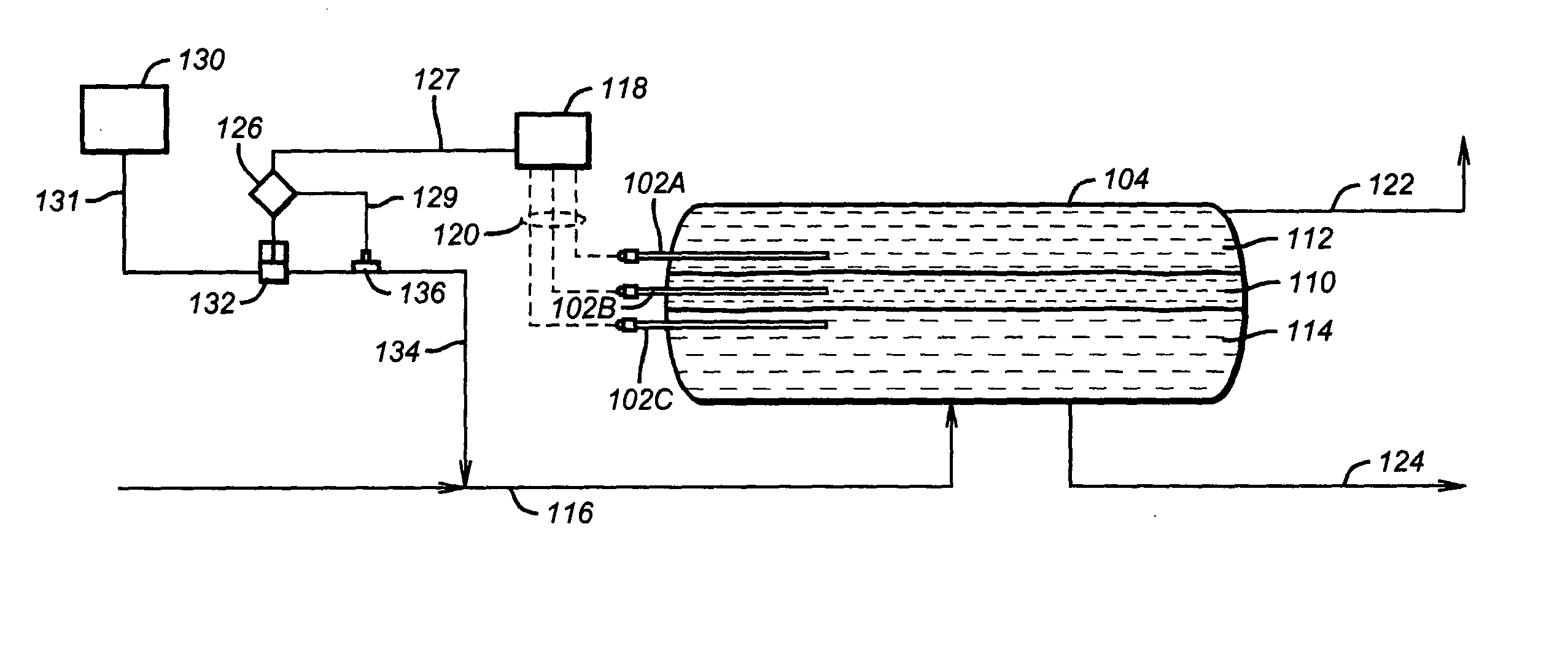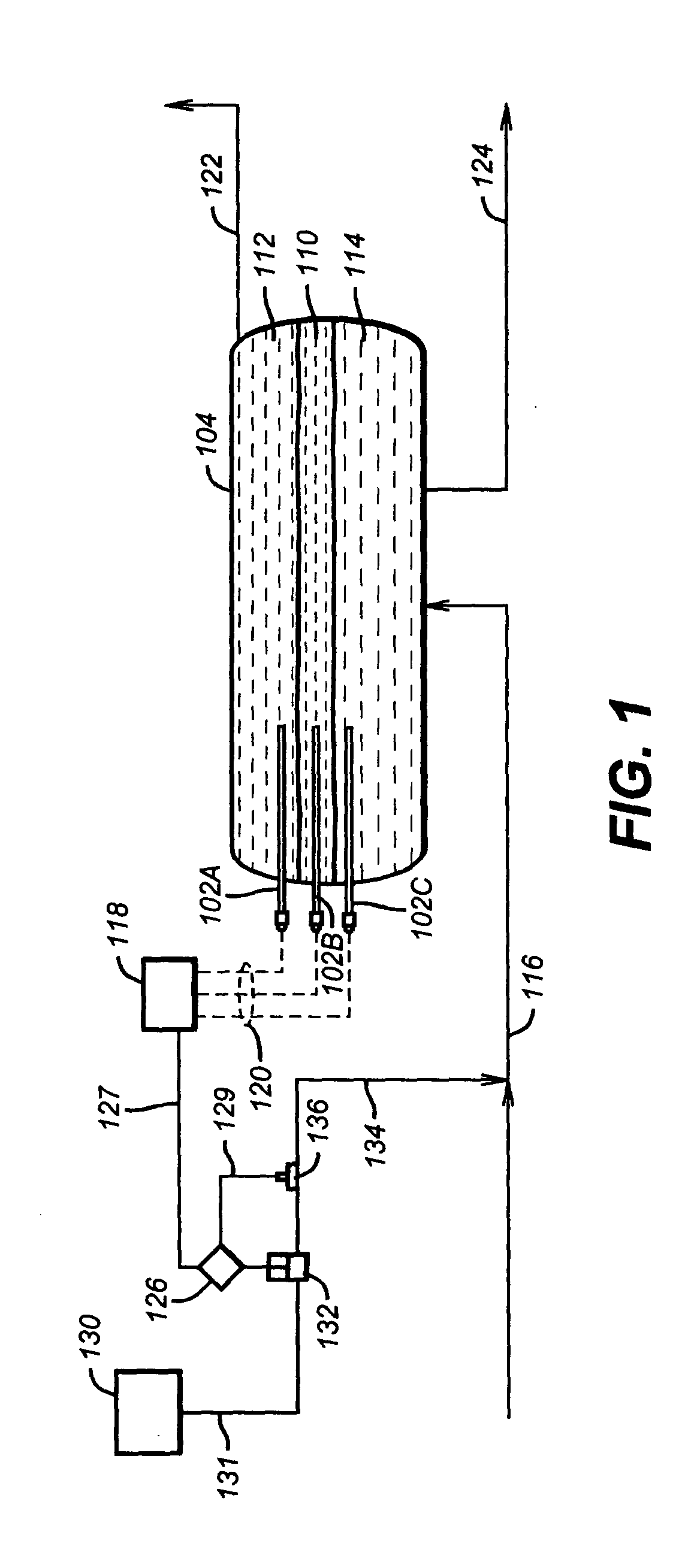Real-time on-line sensing and control of emulsions in formation fluids
a technology of formation fluid and emulsion layer, which is applied in the direction of phase-affecting property measurement, instruments, measurement devices, etc., can solve the problems of difficult demulsification of significant emulsion layer, easy creep of emulsion layer, and inability to distinguish between the three layers, etc., to achieve effective demulsification
- Summary
- Abstract
- Description
- Claims
- Application Information
AI Technical Summary
Benefits of technology
Problems solved by technology
Method used
Image
Examples
Embodiment Construction
[0015] In general, in the practice of the present invention an optical probe, having a probe surface that can measure changes in total internal light reflectance at the probe surface, is placed in contact with a formation fluid that has been produced from an oil well. The refractive index of a material is defined as the ratio of the speed of light in a vacuum to the speed of light in the given material. The present invention utilizes changes in the refractive index in the sample medium, defined here as the emulsion, to elicit changes in the intensity of the total internal reflection signal. If the formation fluid in contact with the probe is crude oil, or if it is brine, the total internal reflected light intensity contained within the probe will not be affected, and thus no change in signal will be recorded. If, however, the formation fluid in contact with the probe is an emulsion, the total internal reflected light intensity contained within the probe will be attenuated, and thus ...
PUM
 Login to View More
Login to View More Abstract
Description
Claims
Application Information
 Login to View More
Login to View More - R&D
- Intellectual Property
- Life Sciences
- Materials
- Tech Scout
- Unparalleled Data Quality
- Higher Quality Content
- 60% Fewer Hallucinations
Browse by: Latest US Patents, China's latest patents, Technical Efficacy Thesaurus, Application Domain, Technology Topic, Popular Technical Reports.
© 2025 PatSnap. All rights reserved.Legal|Privacy policy|Modern Slavery Act Transparency Statement|Sitemap|About US| Contact US: help@patsnap.com


